
Filter News
Area of Research
- Advanced Manufacturing (6)
- Biology and Environment (15)
- Clean Energy (72)
- Computer Science (2)
- Electricity and Smart Grid (3)
- Functional Materials for Energy (2)
- Fusion and Fission (3)
- Fusion Energy (1)
- Isotopes (4)
- Materials (75)
- Materials Characterization (2)
- Materials for Computing (10)
- Materials Under Extremes (1)
- National Security (8)
- Neutron Science (14)
- Quantum information Science (1)
- Sensors and Controls (1)
- Supercomputing (19)
News Topics
- (-) Grid (67)
- (-) Materials (151)
- 3-D Printing/Advanced Manufacturing (133)
- Advanced Reactors (35)
- Artificial Intelligence (107)
- Big Data (66)
- Bioenergy (94)
- Biology (105)
- Biomedical (63)
- Biotechnology (25)
- Buildings (69)
- Chemical Sciences (74)
- Clean Water (31)
- Climate Change (110)
- Composites (32)
- Computer Science (202)
- Coronavirus (46)
- Critical Materials (29)
- Cybersecurity (35)
- Decarbonization (89)
- Education (5)
- Element Discovery (1)
- Emergency (2)
- Energy Storage (112)
- Environment (206)
- Exascale Computing (48)
- Fossil Energy (6)
- Frontier (49)
- Fusion (59)
- High-Performance Computing (100)
- Hydropower (11)
- Irradiation (3)
- Isotopes (57)
- ITER (7)
- Machine Learning (55)
- Materials Science (150)
- Mathematics (10)
- Mercury (12)
- Microelectronics (4)
- Microscopy (51)
- Molten Salt (9)
- Nanotechnology (60)
- National Security (76)
- Net Zero (15)
- Neutron Science (143)
- Nuclear Energy (111)
- Partnerships (54)
- Physics (66)
- Polymers (33)
- Quantum Computing (40)
- Quantum Science (75)
- Renewable Energy (2)
- Security (26)
- Simulation (55)
- Software (1)
- Space Exploration (25)
- Statistics (4)
- Summit (63)
- Sustainable Energy (133)
- Transformational Challenge Reactor (7)
- Transportation (99)
Media Contacts

Researchers have developed and 3D printed the lightest crack-free alloy capable of operating without melting at temperatures above 2,400 degrees Fahrenheit, which could enable additively manufactured turbine blades to better handle extreme temperatures, reducing the carbon footprint of gas turbine engines such as those used in airplanes.

A new technology to continuously place individual atoms exactly where they are needed could lead to new materials for devices that address critical needs for the field of quantum computing and communication that cannot be produced by conventional means.

A new technical collaboration program at the Department of Energy’s Oak Ridge National Laboratory will help businesses develop and launch electric grid innovations. Sponsored by the Transformer Resilience and Advanced Components program in DOE’s Office of Electricity, the initiative will provide companies with access to national laboratory resources, enabling them to capture market opportunities.
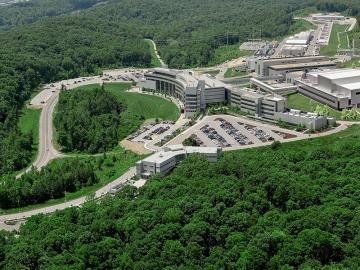
ORNL's Spallation Neutron Source, the nation’s leading source of pulsed neutron beams for research, was recently restarted after nine months of upgrade work.
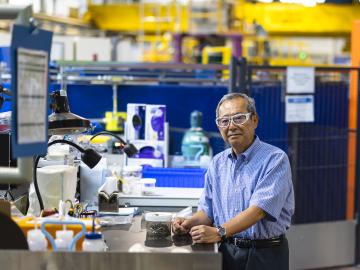
Distinguished materials scientist Takeshi Egami has spent his career revealing the complex atomic structure of metallic glass and other liquids — sometimes sharing theories with initially resistant minds in the scientific community.
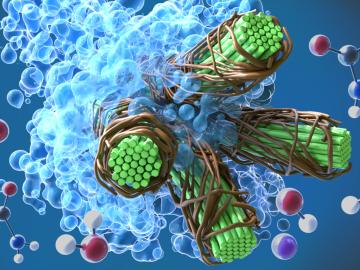
A team led by scientists at ORNL identified and demonstrated a method to process a plant-based material called nanocellulose that reduced energy needs by a whopping 21%, using simulations on the lab’s supercomputers and follow-on analysis.
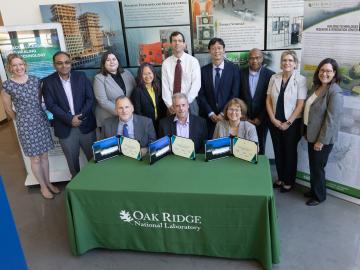
Flexcon Global has exclusively licensed two patented inventions to manufacture a self-healing barrier film from ORNL for research and development purposes. The film can be incorporated into vacuum insulation panels to increase the efficiency of buildings during retrofits. Under a cooperative research and development agreement that began in 2021, Flexcon and ORNL have been exploring the capabilities of the technology and fine-tuning its properties.
Researchers at ORNL recently demonstrated an automated drone-inspection technology at EPB of Chattanooga that will allow utilities to more quickly and easily check remote power lines for malfunctions, catching problems before outages occur.
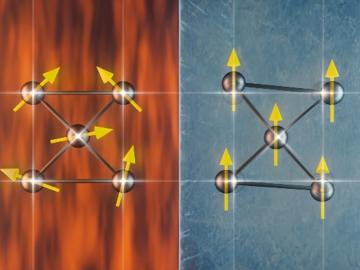
At ORNL, a group of scientists used neutron scattering techniques to investigate a relatively new functional material called a Weyl semimetal. These Weyl fermions move very quickly in a material and can carry electrical charge at room temperature. Scientists think that Weyl semimetals, if used in future electronics, could allow electricity to flow more efficiently and enable more energy-efficient computers and other electronic devices.

Researchers at the Department of Energy’s Oak Ridge National Laboratory and partner institutions have launched a project to develop an innovative suite of tools that will employ machine learning algorithms for more effective cybersecurity analysis of the U.S. power grid.


